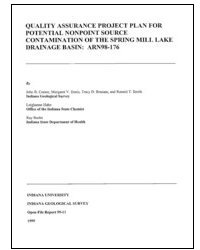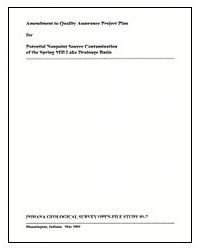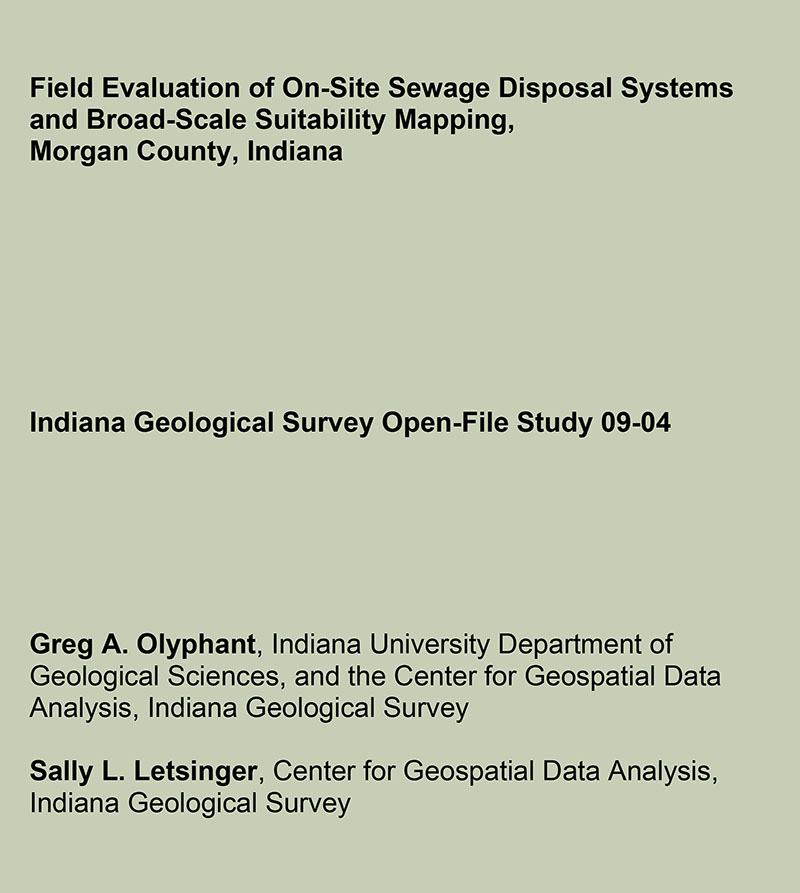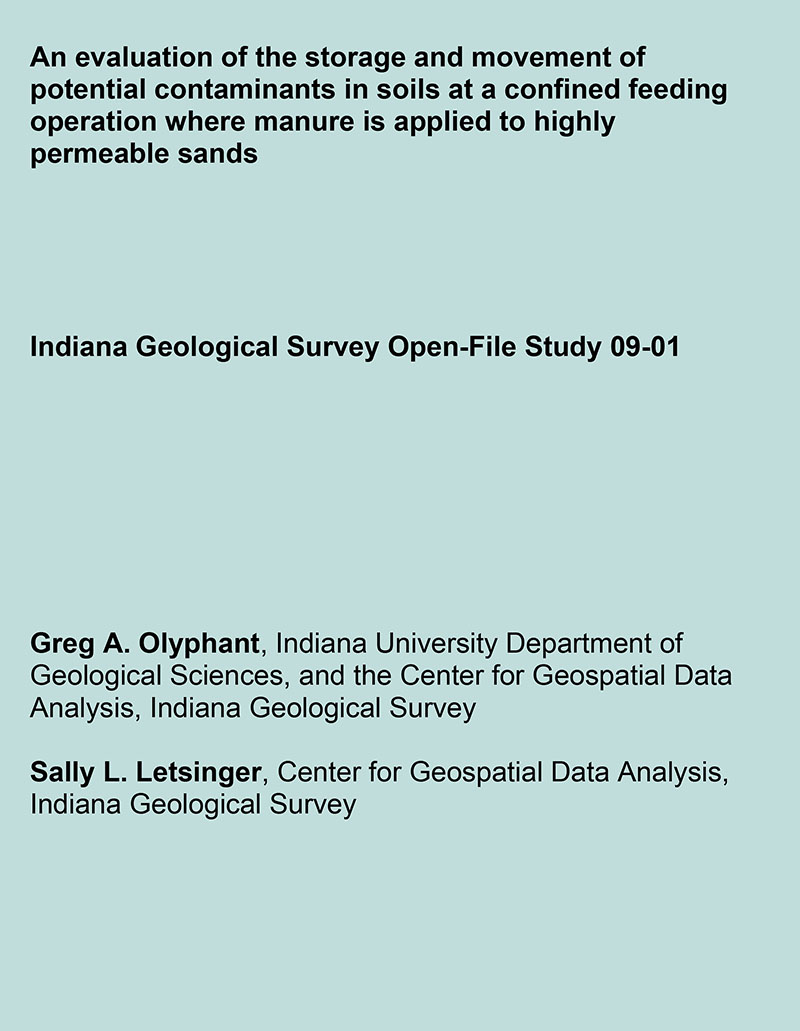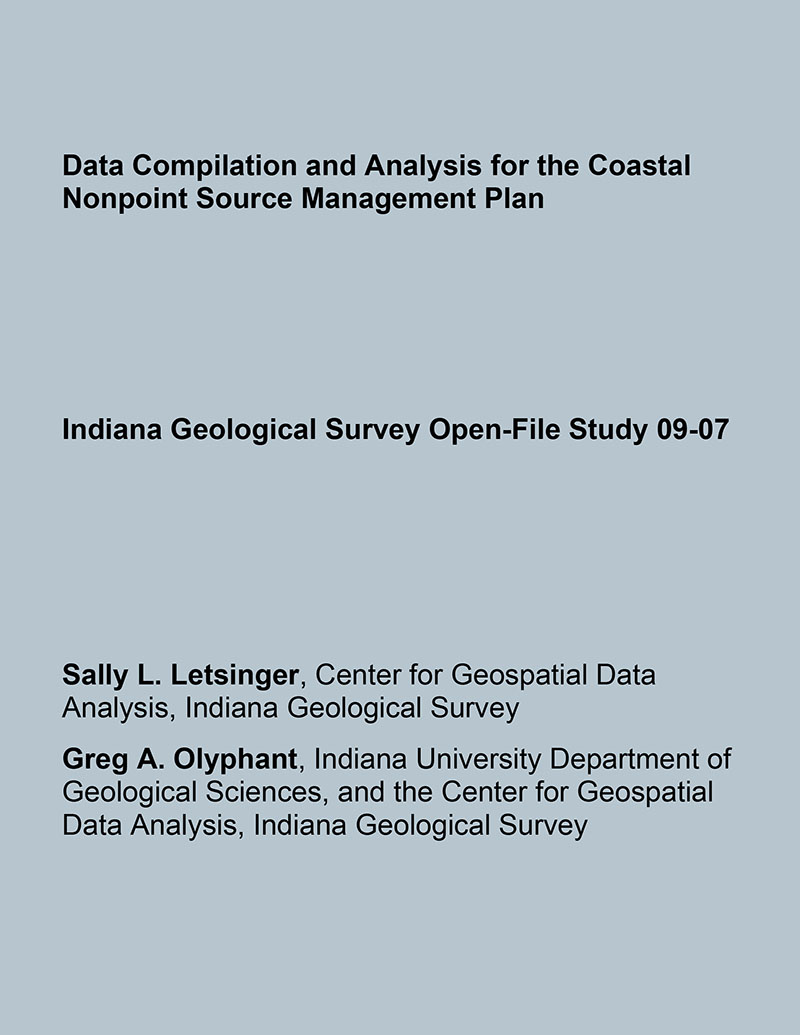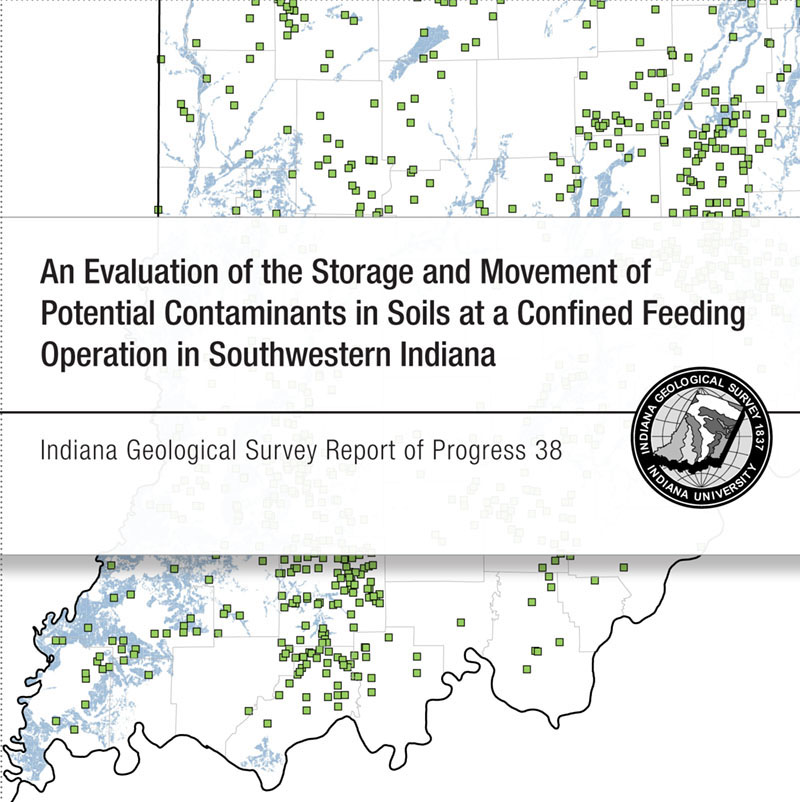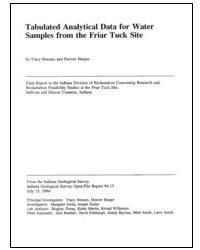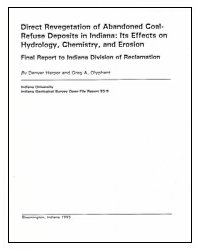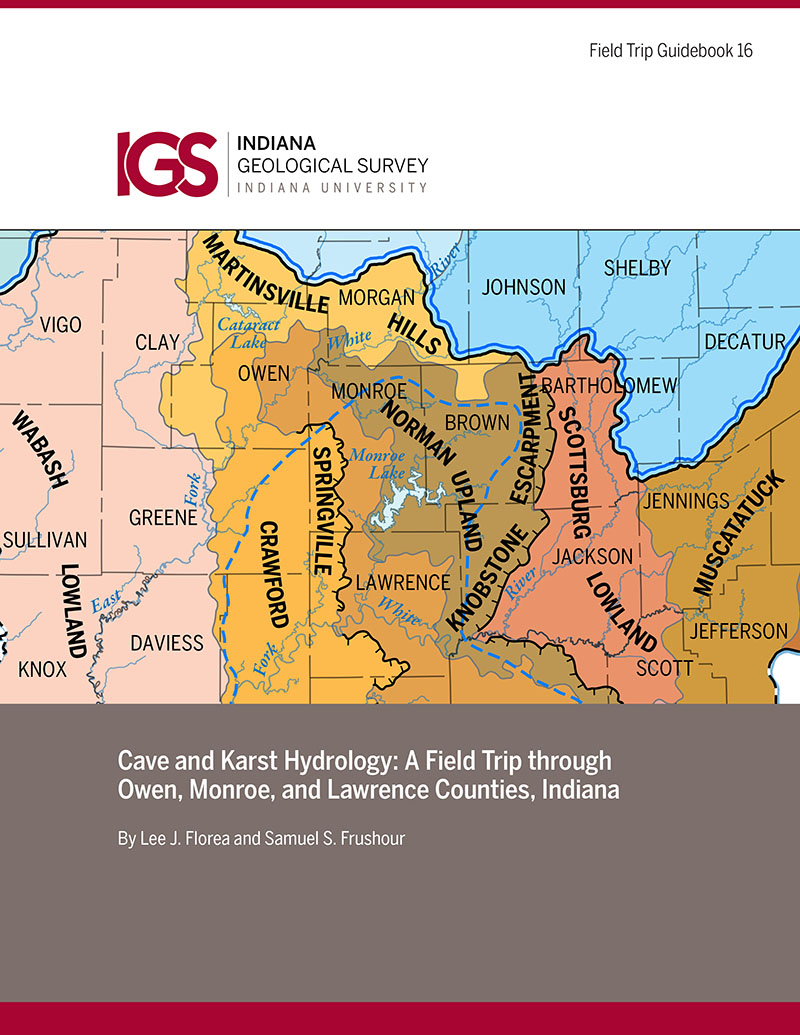INTRODUCTION: Analytical quality control (QC) is a vital component of any water sampling project. A carefully written document is needed for guidance of field and laboratory personnel to assure that proper procedures are followed according to an established protocol. This quality assurance project plan (QAPP) documents the quality assurance (QA) procedures used to monitor the water quality of Spring Mill Lake and its tributaries located in Lawrence County, Indiana. Included in this document are the QC statements for the field sampling and laboratory work. In the field the following measurements are performed by personnel from the Indiana Geological Survey (IGS): Oxidation-reduction potential (Eh), pH, specific conductance (SpC), dissolved oxygen (DO), water temperature, and alkalinity. In addition the IGS will assume responsibility for collecting all water samples. The Indiana University Department of Geological Sciences (DGS) will monitor the hydrology and conduct dye tracing experiments. The anion, major and minor cation, total suspended solids (TSS), trace metal, pesticide, and E. coli analyses are performed in the laboratories of the Indiana Geological Survey (IGS) in Bloomington, the Office of the Indiana State Chemist (OISC) in West Lafayette, the Indiana State Department of Health (ISDH) in Indianapolis, and the Ball State University Chemistry Department (BSCD) in Muncie. Anions included are chloride, fluoride, sulfate, nitrate, phosphate, and bicarbonate. Major and minor cations included are aluminum, barium, boron, calcium, iron, magnesium, manganese, potassium, silicon, sodium, strontium, and zinc. Trace metals included are antimony, arsenic, cadmium, chromium, copper, lead, mercury, molybdenum, nickel, selenium, and silver. Pesticides included are Acetochlor, Alachlor, Atrazine, Bromacil, Cyanazine, Diazinon, Endosulfan, Fenamiphos, Metolachlor, Metribuzin, Pendimethalin, Prometon, Propachlor, Simazine, Terbufos, Trifluralin, 2,4-D, 2,4-DP, Acifluorfen, Bentazon, Dicamba, MCPA, MCCP, Picloram, Aldicarb, Carbofuran, Methiocarb, Methomyl, Oxamyl. The QA/QC for an individual analysis is the responsibility of the laboratory in which the specific method is used. The IGS will act as the lead agency and will coordinate the final QA/QC, quarterly reports, publication of the data, and interpretation of the results.
Comer, J. B., Ennis, M. V., Branam, T. D., Smith, R. T., Hahn, L., Beebe, R. 1999, Quality assurance project plan for potential nonpoint source contamination of the Spring Mill Lake drainage basin: ARN98-176: Indiana Geological Survey Open-File Study 99-11, 31 p., 9 fig.
Notes: Publications in the Indiana Geological Survey Open-File series have been inconsistently named using a variety of series titles including "Open-File Report," "Open-File Map," and "Open-File Study." Prior to 1994, a publication in this series was generally referred to as an "Open-File Report" (but not always). To help reduce confusion created by these inconsistencies, the IGS now refers to every publication in the Open-File series as an "Open-File Study." To be entirely correct in writing a bibliographic reference for a publication, one should use the series name and number that appears on the publication itself.
2 appendices.
You may also like:
Keywords: lake, water, geochemistry, hydrology, environmental geology
This item is no longer available. Please contact the Indiana Geological and Water Survey Publication Sales Office for more information. Many IGWS publications are available through local libraries.
Publication Sales Office
Indiana Geological Survey
1001 E. 10th St.
Bloomington, IN 47405
(812) 855-7636 office phone
(812) 855-2862 office fax
IGSINFO@indiana.edu



